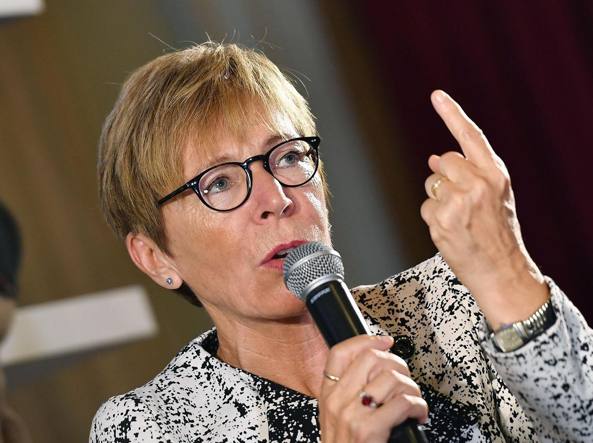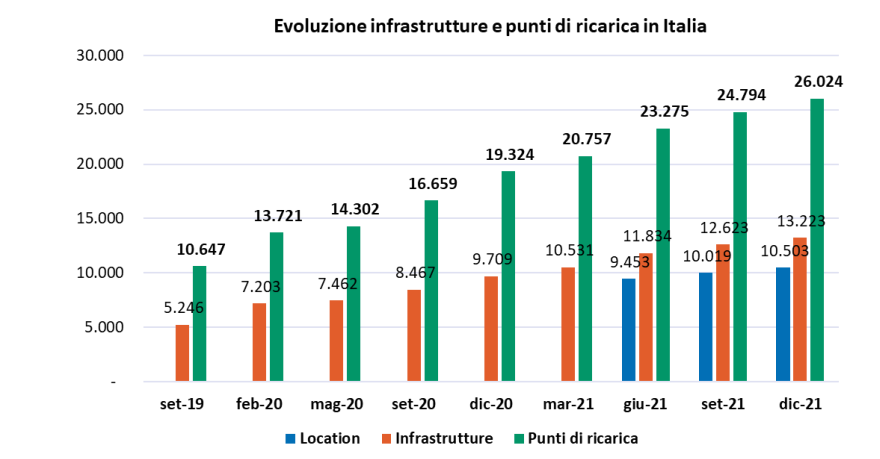Cars and electric recharges, all the right slaps of Gabanelli on Italian delays

Italy back on the electric car and its charging network. Milena Gabanelli's complaint in the Corriere della Sera
It's just a matter of time, a little. The electric car will conquer the Italian roads, Europe asks us (or imposes it on us). The fight against climate change and the energy transition also go from farewell to the internal combustion engine, to make room for batteries and alternative fuels.
Yet Italy seems to ignore what should happen soon. In terms of the charging network, we are very late. Will the sales sprint in the past 12 months make a difference?
Perhaps, but there are many problems to be solved, as reported in the Dataroom section of the Corriere della Sera Milena Gabanelli with " Compulsory electric car: because Italy is at a standstill ".
Let's go step by step.
THE NUMBERS OF ELECTRIC CARS
Let's start with the numbers. In Italy, as of January 31, 2022, 244,944 electric vehicles were circulating, of which 125,789 full electric cars and 119,155 Phev cars, plug-in hybrids, according to the data of the latest monthly survey by Motus-E.
The numbers are expected to skyrocket over the next few years. And according to forecasts communicated in Brussels, they will become 6 million by 2030 and 19 million by 2050. In about 28 years, more than 32 Twh of electricity will be needed.
THE NUMBERS OF THE COLUMNS
And infrastructure and charging points will be needed. Many more than they are now.
As of December 31, 2021, there were 26,024 recharging points. There are 13,233 charging infrastructures (stations or columns), in 10,503 locations accessible to the public, again according to Motus-E data. The standard charging points, of the slow type of 3-7 kW (or "slow") and of the rapid type of 11-22 kW (or "quick"), represent 73.6% of the total, while the charging points fast or ultra-fast (with power over 50 kW), make up 6.1% of the total, as of December 31, 2021
On this front too, the numbers will grow, with the contribution of money from the NRP. By 2025, 21,225 charging points will be added, financed with 740 million of the NRP.

NO NATIONAL MAP OF CHARGING POINTS
But funding is not enough. The truth is that there are many knots to be solved.
In Italy, for example, there is still no National Single Platform (PUN) which conveys, within a single official and accessible database, all the information relating to public infrastructures present at national level. An essential mapping also in view of the planning of the "new columns linked to the Pnrr calls", specifies Milena Gabanelli.
"The Ministry of Ecological Transition – adds the journalist – is committed to providing with its decree by mid-March".
INTEROPERABULITY, THIS UNKNOWN
Another node to be solved is interoperability, that is the interchange and interaction of data and structures between different systems. “Today it can happen that you connect to a column that does not recharge your car because it belongs to an operator other than the one you subscribed to”, reads the Dataroom article.
We need more agreements between companies and brands in the name of an ever greater diffusion of electric cars.
COLUMNS, AUTHORIZATIONS AND POWER FAILURE
It's still. To date, 13% of the columns installed are not connected to the network. The issue often goes far beyond bureaucracy, with infrastructures located where the electricity does not reach. In this 2022 it is desirable that the 8,000 municipalities adopt a unified approach, approving “regulations with standard bases and coordinating with the electricity grid operators”, writes Milena Gabanelli.
TOO FEW COLUMNS ON THE HIGHWAY
There is still a lot to do on the location as well. Geographically, about 57% of the infrastructures are distributed in Northern Italy, about 23% in the Center, while only 20% in the South and the Islands. 34% is located in the provincial capitals and the remainder in the other municipalities. Lombardy, with 4,542 points, remains the most virtuous region and alone owns 17% of all national recharging points.
The situation is even worse on the motorways. To date, 118 public charging points have been installed, of these 78% recharge at powers above 43 kW (in DC), while the remaining 22% have a charging power lower than or equal to 43 kW (AC): these are only 1.2 fast or ultra-fast charging points every 100 km of motorway network.
These numbers are too low if you think that according to a 2018 regulation, there should be a fast charging column every 50 kilometers. They should increase in a short time, but no concessionaire, the Dataroom article denounces, “is proceeding by means of a tender, because the Transport Regulatory Authority last May took nine months to define the tender schemes. They are now over and, if you think that competition has positive effects, the races must be compulsory ".
A theme also underlined by Enel's top management .
THE CONDOMINIUM QUESTION
Another issue is that of condominiums, where installing a charging station in common areas or garages is still difficult.
"We need procedures that facilitate the operation", Milena Gabanelli hopes.
This is a machine translation from Italian language of a post published on Start Magazine at the URL https://www.startmag.it/smartcity/auto-e-ricariche-elettriche-tutte-le-giuste-sberle-di-gabanelli-sui-ritardi-italiani/ on Mon, 14 Feb 2022 14:14:02 +0000.
